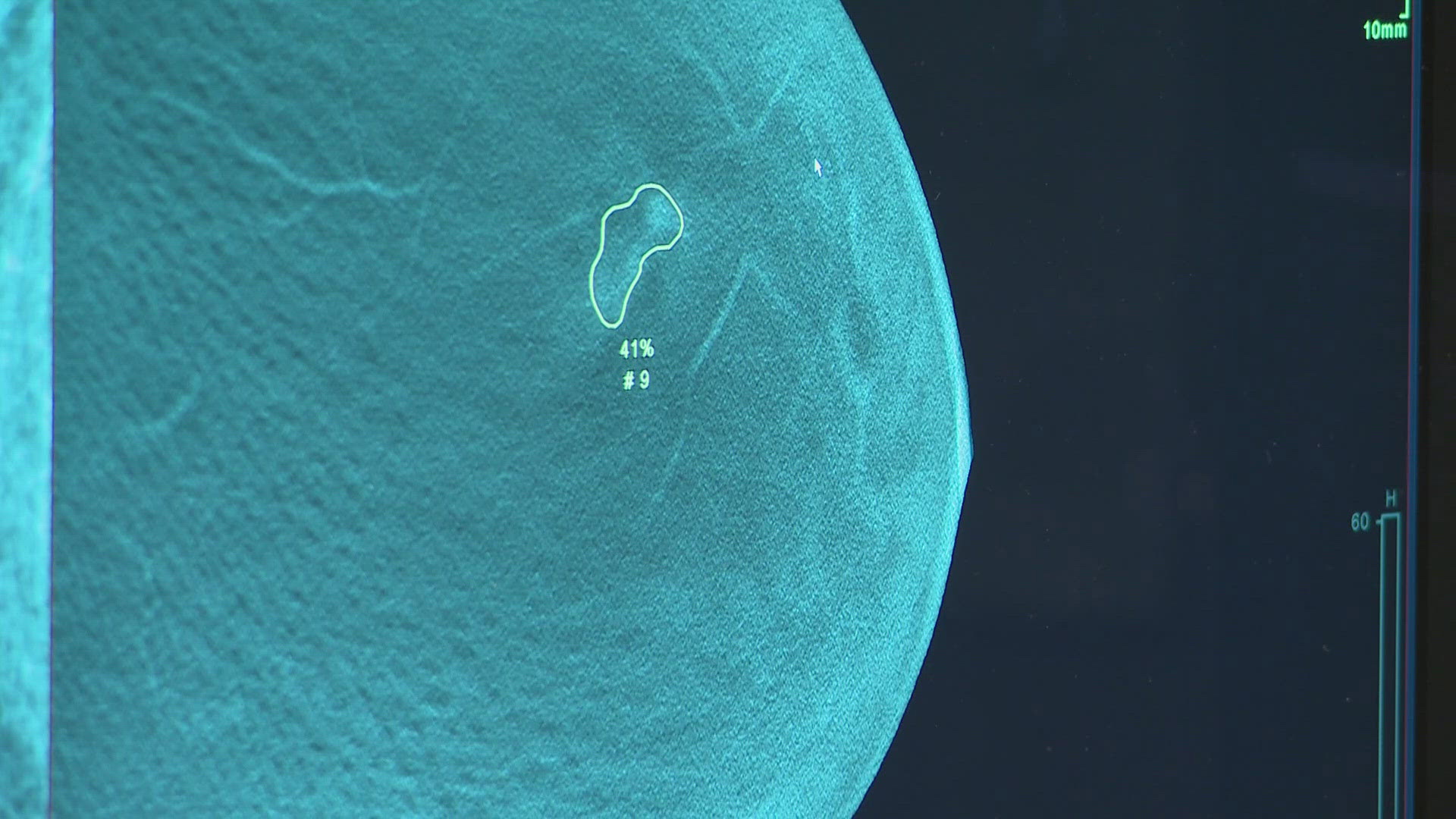CLEVELAND — New CDC statistics show five-year survival rates for women diagnosed with breast cancer is roughly 91%.
That number varies depending on the state at diagnosis, which is why doctors encourage vigilance for early detection.
“We really want to find breast cancers as small and as early as possible. The reason being that they're easier to treat, they're easier to take care of, they're hopefully a lower stage. And so being able to find cancers and really impact the course of treatment for those women and ultimately improving their quality of life is really critical," said Dr. Laura Dean.
With over a decade at Cleveland Clinic, Dr. Dean's job as a breast radiologist is looking for signs of abnormality with mammograms that may need further examination.
With the help of artificial intelligence, she has a second set of eyes that can flag very small outliers she may initially miss.
“AI has really specific algorithms where it's looking for really subtle changes in breast tissue that could be a very early sign of something suspicious or potentially suspicious. And these are things that radiologists also look for, but something that the AI is specifically honing in its algorithms," said Dr. Dean.
She explains that certain scans can be trickier to read than others.
“What’s tricky about dense tissue on mammography is breast cancer also typically shows up as this white tissue. You can imagine how there can be a masking effect, or a cancer could be hiding in all of this dense breast tissue. And again, that’s where AI is really helpful in alerting us to areas where that pattern could be forming into a cancer," said Dr. Dean.
She continues explaining how AI highlights areas, giving it a percentage score.
"The percentage is basically just a calculation of all cases the AI software has learned from, which is thousands and thousands. Of those thousands of cases, 27% of cases that had features like this, ended up being cancer.”
Early detection is the primary objective. Using her years of training and experience coupled with adapting AI, she says it will help save many lives in the long run.
"I think it's a matter of my human experience and looking at really subtle cancers that I have seen develop over time that may have features that don't necessarily trigger the AI, and I have seen a number of cases where the AI thinks it's negative, but we find something that's a really subtle cancer. So it can't be 11 or none, you know, it can't be only, you know, only the AI, because I think the radiologist input in that human element of interpretation is really, really important," said Dr. Dean.
In terms of where this technology is headed, she believes we're just scratching the surface.
"I think the research on AI is vast. I think there are a lot of things coming down the pike that are still unknown. I think there will be a lot of really exciting innovation around AI, not just with breast imaging but across the whole medical field and really a lot of aspects of our daily lives."

